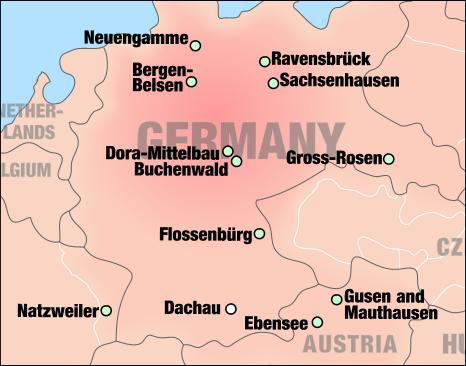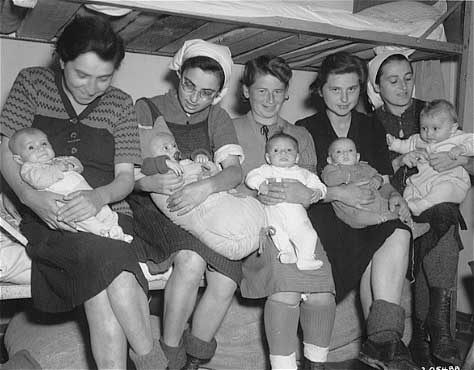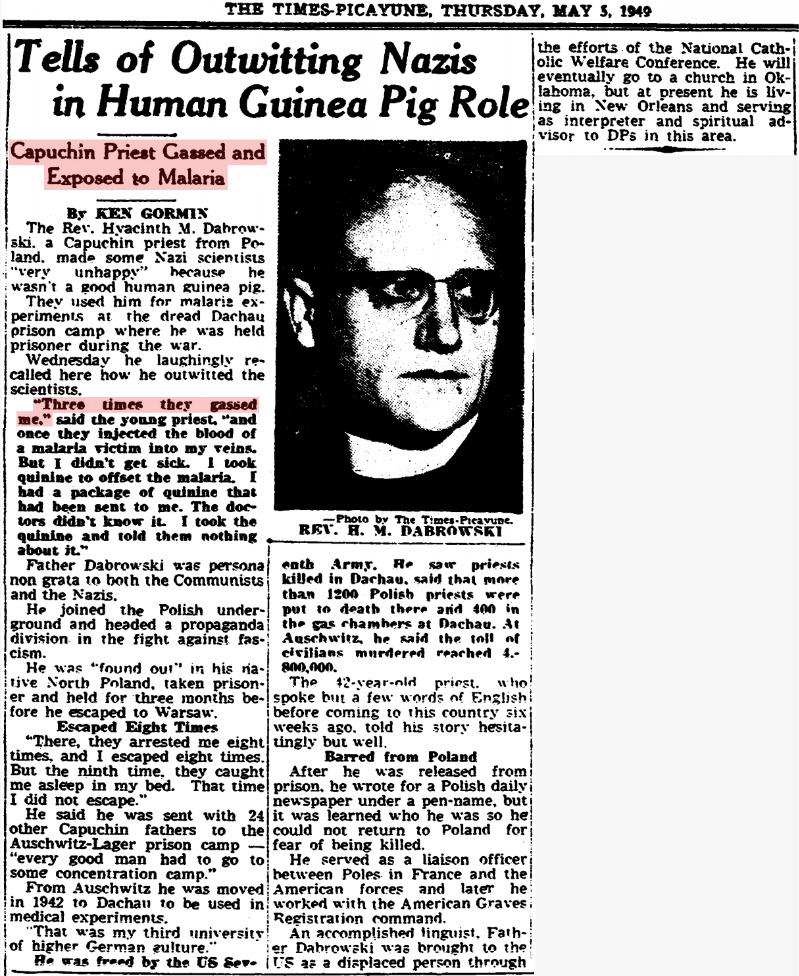[back] Holocaust revisionism

DACHAU
[back]
Holocaust
revisionism
Simon Wiesenthal wrote in 1975 that "there were no extermination camps on German soil."
[They admit now there were no extermination camps on German soil, yet former inmates had testified that gassings took place and several commandants of these camps even signed "confessions", while the death statistics started at 238,000 and are now at 20,000. You can see from the photographs that the inmates were healthy, apart from the ones who succumbed to typhus. There was a real crime at Dachau and that was the murder of 500 SS soldiers.]
See: Auschwitz-Birkenau Belsen Buchenwald Mauthausen Majdanek Sobibor Treblinka US based Camps Allied Camps
[1960] "No Gassing in Dachau" By Dr. Martin Broszat Neither in Dachau nor in Bergen-Belsen nor in Buchenwald were Jews or other prisoners gassed.
Execution of SS soldiers at
Dachau
External
Shutter Island scene shows Dachau massacre
Survivor of the Dachau “death train” saved by an African American soldier
The first SS soldiers who tried to surrender the Dachau camp were shot by Lt. William Walsh
Witnesses
Bernard Kneuper
Frankl, Viktor
Quotes
All photographs of heaps of corpses were taken in Western camps
around the end of the war, such as Dachau, Bergen-Belsen, and Buchenwald, where
historians now agree no mass murders took place. Significantly, there are no
such photographs taken at the camps in which mass murder is alleged to have
occurred (Auschwitz, Treblinka, Belzec, Sobibor, Chelmno, Majdanek.) These
eastern camps were all in areas which came under Soviet control at war's end. It
is very telling that the Soviets released no pictures of mass graves or heaps of
corpses and allowed no journalists, medical professionals, or other experts to
examine the camps. Since the end of the 1980s.
FAQ about Revisionism by
Germar Rudolf
The day after Dachau was taken, Kneuper and a friend drove a Jeep over to the
camp. His friend's father had been incarcerated in Dachau for a week or two
during the 1930s and he wanted to see it. (23-5640) Kneuper testified that he
saw dead and emaciated bodies of camp inmates but also saw camp inmates who
looked just as well off and husky and hardy as the German veterans. There were
plenty of these latter inmates. Kneuper testified that they "certainly weren't
starving; they certainly didn't act as though they were." Kneuper was shown the
photograph of released Dachau inmates on page 25 of Did Six Million Really Die?.
Kneuper stated that while definitely not all the inmates looked like that, the
great majority of the inmates were like those in the photograph. (23-5638, 5639)
He never saw a gas chamber. They drove by the crematorium but did not make a
detailed examination of the camp when they were there. (23-5640)
.....On cross-examination, Kneuper testified that the visit to Dachau lasted
about two hours. He talked to the prisoners and looked them over generally. He
agreed he had no medical training. Kneuper could not say whether the prisoners
had yellow triangles or not; it was not something he was looking for. (23-5641,
5642)
Kneuper never spoke to the interrogators attached to the
division which actually captured Dachau. He did not know any of them. He did not
speak to the few guards he saw at Dachau during his visit. (23-5643)
[Bernard Kneuper]
The 'False News' Trial of Ernst Zündel -- 1988
After reviewing all the material and inspecting all of the sites at Dachau, Mauthausen and Hartheim Castle, this investigator has determined that there were no gas execution chambers at any of these locations. It is the best engineering opinion of this investigator that the alleged gas chambers at the above inspected sites could not have then been, or now be, utilized or seriously considered to function as execution gas chambers. The Second Leuchter Report
The figures of Dachau casualties are typical of the kind of exaggerations that have since had to be drastically revised. In 1946, a memorial plaque was unveiled at Dachau by Philip Auerbach, the Jewish State-Secretary in the Bavarian Government who was convicted for embezzling money which he claimed as compensation for nonexistent Jews. The plaque read: "This area is being retained as a shrine to the 238,000 individuals who were cremated here." Since then, the official casualty figures have had to be steadily revised downwards, and now stand at only 20,600 the majority from typhus and starvation only at the end of the war. This deflation, to ten per cent of the original figure, will doubtless continue, and one day will be applied to the legendary figure of six million as a whole. Did Six Million Really Die? by Richard Harwood
If Reitlinger's statement was a rearguard action, the statement of the Institut für Zeitgeschichte was a general retreat. What made it so sensational was that not only had a host of former inmates testified that "gassings" took place at concentration camps in the Reich, but several commandants of these camps even signed "confessions" affirming the existence of the alleged "gas chambers." At the Nuremberg IMT trial, the British Chief Prosecutor Sir Hartley Shawcross specifically cited Dachau, Buchenwald, Mauthausen, and Oranienburg as places where murder was "conducted like some mass production industry in the gas chambers and ovens."---Zeitgeschichte in Munich 1960 The Auschwitz Trial: A Judge Looks at the Evidence by Dr. Wilhelm Staeglich
Neither in Dachau nor Bergen-Belsen nor in Buchenwald were Jews or other inmates gassed. The gas chamber in Dachau was never finished and put into operation . . . The mass extermination of the Jews by gassing began in 1941/42, and occurred in a very few places, selected exclusively for the purpose and outfitted with the appropriate technical facilities, above all in occupied Polish territory (but nowhere in the German Reich proper).10
"It is true that there were no extermination camps on German soil and thus no
mass gassings such as those that took place at Auschwitz, Treblinka and other
camps. A gas chamber was in the process of being built at Dachau, but it was
never completed."
Simon Wiesenthal, "Gassings in Germany" The Stars and Stripes European
Edition, Sunday, January 24, 1993 pg. 14.
Asked about the photo in the Harwood booklet showing "healthy and cheerful
inmates" at Dachau at its surrender to American soldiers in the final weeks of
the war, I replied that it is an official U.S. Army photo, one of a series I had
examined in the archives at the Pentagon. Another photo in the series, which was
taken at the same time, shows Jewish mothers and their babies in the camp.
A large chart showing the monthly death rate at Dachau during the war was also
presented to the court as a defense exhibit. I testified that the figures given
were from a U.S. government prosecution exhibit presented at one of the postwar
trials in Germany. The chart graphically showed a tremendous increase in the
death rate during the final months of the war, which was the result of disease
brought on by tremendous overcrowding and other unavoidable consequences of the
chaotic wartime conditions. The figures implicitly confirm that there was no
extermination program or policy at the camp.
A plaque placed at Dachau shortly after the end of the war proclaimed that
238,000 people had died in the camp, I noted. Today, the total number of Dachau
dead is pretty universally acknowledged to have been about 20,000. In the case
of other camps as well, I said, the numbers of alleged victims have been
drastically revised downwards over the years, although the public is rarely ever
told that these figures have been changed. New figures are given without
explaining why the old ones are no longer accurate.
The German guards'
at the Dachau, Buchenwald and Mauthausen camps were simply
murdered after the camps were taken by the Americans in the final weeks of the
war, I testified. The murder of more than 500 guards at Dachau is confirmed, I
said, by two eyewitnesses to the atrocity. The first is U.S. Army officer Howard
Buechner, who described the killings in detail in his book, Dachau: The Hour of
the Avenger. The second is by Turkish inmate Nerin Gun, who describes the
atrocity in his memoir, The Day of the Americans. U.S. Army records, which were
declassified at my request, also confirm the atrocity. My Role in the [Ernst]
Zündel Trial
